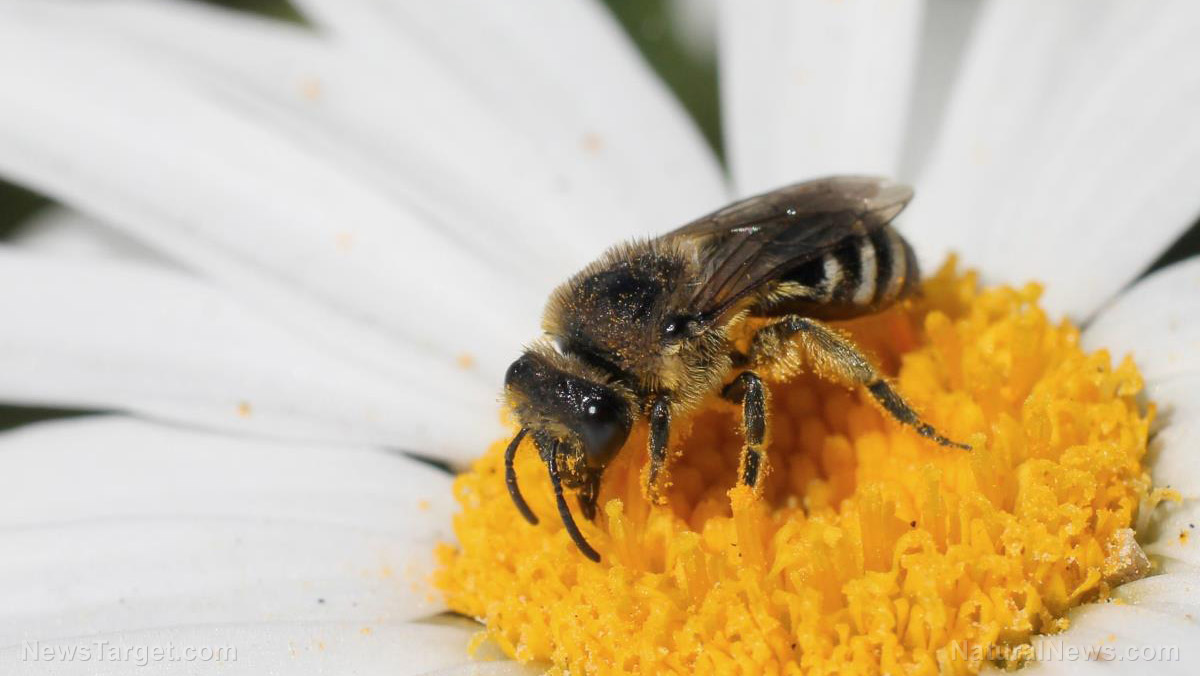Do your part and save the bees with these 10 easy-to-grow flowers
05/10/2017 / By Frances Bloomfield

Bee populations have dwindled in recent years. Pesticides, parasites, and the disappearance of wildflowers have all been cited as reasons for the declines of domesticated and wild bees. Without these important little pollinators, the amount of agricultural crops would shrink considerably. Less bees means less food for us. Fortunately, the simple act of planting annual flowers can help bring bee numbers back up. These are ten bee-friendly flowers that are easy-to-grow and highly recommended by TreeHugger.com.
- Garden Nasturtium – Beloved as both an ornamental and medicinal plant, Garden Nasturtiums are also noteworthy as popular climbers in American and European gardens. If you don’t have a large garden, don’t fret; there are shorter, more compact varieties available that are perfect for growing in pots.
- French Marigold – Commonly used as a companion plant, French Marigolds protect vegetable crops from harmful insects like white flies. Honeybees aren’t as repulsed as other pests; in fact, honeybees have been known to flock to Marigolds. The single flower varieties are the better choice for bees, so keep this in mind when picking flowers.
- Common Marigold – These are fast-growing plants blessed with aromatic leaves and vibrant flowers. They also serve as excellent substitutes for saffron in rice dishes.
- Californian Bluebell – These are hardy flowers that do well in dry soil, require little attention, and attract pollinators.
- Common Sunflower – Whether you plant giant Sunflowers or the shorter varieties, be sure to plant them where they can get the most amount of sun. There are pollen-free cultivars on the market which aren’t good at attracting bees, so avoid these at all costs.
- Baby’s Breath – These delicate white flowers are known for being easy to grow from seeds. More than just bouquet fillers, Baby’s Breath lure in honeybees with ease.
- Cosmea – Brightly colored and beautiful, the towering Cosmea also comes in smaller varieties for easier planting.
- Honeywort – Their rich, purple flowers and blue-purple bracts are highly enticing to bees and butterflies. To get the best Honeyworts, soak the seeds in water 12 hours before sowing.
- Borage – Also known as Starflower, Borage flowers aren’t just good at drawing in bees. Once a bee has a visited a flower, it refills with nectar within two minutes, making it a perfect honey plant as well as a bee-friendly annual.
- Cornflower – The “flower” of this plant is actually made up of several smaller flowers. This is an affordable plant famous for being irresistible to bees.
Bees already do so much for us, so this is the least we can do for them. You don’t need a big garden to grow these flowers; a few pots and a windowsill will do. However, there are a few more things to keep in mind while choosing the perfect flower for your bee-friendly garden. First, be sure to pick plants native to your region, since plants that aren’t from your area can do a lot of damage. Additionally, a lot of commercial establishments carry seedlings infected with insecticides. Avoiding these is easy: simply turn to a local provider for organic plants. When it comes to caring for your flowers, don’t under- or over-water the soil. The majority of these annuals will thrive in a temperature ranging from 57 to 68 degrees Fahrenheit. Finally, seeds usually begin germinating within six to 10 days, and should be flowering within seven to 10 weeks.
Keep up to date on what pesticides are doing to the environment by visiting Pesticides.news
Sources include:
RECENT NEWS & ARTICLES
COPYRIGHT © 2017 ENVIRON NEWS




















